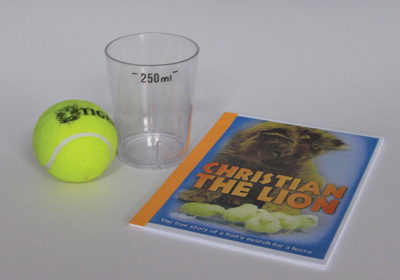|
|||||||||||||||||||||||||||||||
|
|||||||||||||||||||||||||||||||
%
responses 2009 ('05) |
|||||||||||||||||||||||||||||||
y4 |
y8 |
||||||||||||||||||||||||||||||
| Let’s start with – | |||||||||||||||||||||||||||||||
| The time it would take one of you to bounce a ball 100 times. | |||||||||||||||||||||||||||||||
| 1. What did you do to estimate this answer? | |||||||||||||||||||||||||||||||
| 2. What was your estimate? | |||||||||||||||||||||||||||||||
| STUDENTS 1 & 2: | |||||||||||||||||||||||||||||||
| Students did estimate: | yes | 39 | 79 | ||||||||||||||||||||||||||||
| Estimation method: | attempted
to bounce ball by some fraction of 100 and measured time taken, then multiplied by appropriate ratio for 100 bounces |
14 | 70 | ||||||||||||||||||||||||||||
| Validity: | (time
measured × 100 ÷ number of bounces measured) estimate was in the likely range (40 - 120 secs) |
60 | 73 | ||||||||||||||||||||||||||||
| STUDENTS 3 & 4: | |||||||||||||||||||||||||||||||
| Students did estimate: | yes | 36 | 73 | ||||||||||||||||||||||||||||
| Estimation method: | attempted
to bounce ball by some fraction of 100 and measured time taken, then multiplied by appropriate ratio for 100 bounces |
15 | 66 | ||||||||||||||||||||||||||||
| Validity: | (time
measured × 100 ÷ number of bounces measured) estimate was in the likely range (40 - 120 secs) |
55 | 80 | ||||||||||||||||||||||||||||
| The number of words in the story book. | |||||||||||||||||||||||||||||||
| 3. What did you do to estimate this answer? | |||||||||||||||||||||||||||||||
| 4. What was your estimate? | |||||||||||||||||||||||||||||||
| STUDENTS 1 & 2: | |||||||||||||||||||||||||||||||
| Estimation method: | Figured out words per page by working out words per line, then multiplying by number of lines: | ||||||||||||||||||||||||||||||
| counted number of lines and number of words per line and multiplying | 3 | 21 | |||||||||||||||||||||||||||||
| counting words on a whole page | 32 | 53 | |||||||||||||||||||||||||||||
| Used estimate of words on a page and multiplied by number of pages: | |||||||||||||||||||||||||||||||
| yes,
and considered part pages (Y4 = 27/28 pages, Y8 = 153 pages) |
5 | 4 | |||||||||||||||||||||||||||||
| yes,
but treated all pages the same (Y4 = 31 pages, Y8 = 162/170 pages) |
17 | 40 | |||||||||||||||||||||||||||||
| yes,
counted pages but distinction between part and whole pages unclear |
14 | 39 | |||||||||||||||||||||||||||||
| Validity: | estimated
total was in the likely range 20 63 (Y4 = 3000 – 5500 words / Y8 = 30 000 – 55 000) |
||||||||||||||||||||||||||||||
| STUDENTS 3 & 4: | |||||||||||||||||||||||||||||||
| Estimation method: | Figured out words per page by working out words per line, then multiplying by number of lines: | ||||||||||||||||||||||||||||||
| counted number of lines and number of words per line and multiplying | 4 | 28 | |||||||||||||||||||||||||||||
| counting words on a whole page | 31 | 44 | |||||||||||||||||||||||||||||
| Used estimate of words on a page and multiplied by number of pages: | |||||||||||||||||||||||||||||||
| yes,
and considered part pages (Y4 = 27/28 pages, Y8 = 153 pages) |
3 | 5 | |||||||||||||||||||||||||||||
| yes,
but treated all pages the same (Y4 = 31 pages, Y8 = 162/170 pages) |
23 | 36 | |||||||||||||||||||||||||||||
| yes,
counted pages but distinction between part and whole pages unclear |
14 | 45 | |||||||||||||||||||||||||||||
| Validity: | estimated
total was in the likely range (Y4 = 3000 – 5500 words / Y8 = 30 000 – 55 000) |
21 | 56 | ||||||||||||||||||||||||||||
| The amount one of you would drink in a week. | |||||||||||||||||||||||||||||||
| 5. What did you do to estimate this answer? | |||||||||||||||||||||||||||||||
| 6. What was your estimate? | |||||||||||||||||||||||||||||||
| STUDENTS 1 & 2: | |||||||||||||||||||||||||||||||
| Students did estimate: | yes, as number of cups/glasses | 36 | 58 | ||||||||||||||||||||||||||||
| yes, as ml or litres | 14 | 26 | |||||||||||||||||||||||||||||
| Multiplied by seven: | yes | 40 | 85 | ||||||||||||||||||||||||||||
| no, took weeks as 5 days | 2 | 3 | |||||||||||||||||||||||||||||
| Validity: | estimated
total in the range of 7L - 18L (28 - 72 cups) |
23 | 57 | ||||||||||||||||||||||||||||
| STUDENTS 3 & 4: | |||||||||||||||||||||||||||||||
| Students did estimate: | yes, as number of cups/glasses | 33 | 63 | ||||||||||||||||||||||||||||
| yes, as ml or litres | 15 | 22 | |||||||||||||||||||||||||||||
| Multiplied by seven: | yes | 39 | 81 | ||||||||||||||||||||||||||||
| no, took weeks as 5 days | 5 | 2 | |||||||||||||||||||||||||||||
| Validity: | estimated
total in the range of 7L - 18L (28 - 72 cups) |
26 | 80 | ||||||||||||||||||||||||||||
| 7. Are any of your estimates similar? | |||||||||||||||||||||||||||||||
| 8. Why is that so? | |||||||||||||||||||||||||||||||
| Discussion: | strong | 2 | 6 | ||||||||||||||||||||||||||||
| moderate | 19 | 50 | |||||||||||||||||||||||||||||
| weak | 79 | 44 | |||||||||||||||||||||||||||||
| 9. What things do you think you did well in this activity? | |||||||||||||||||||||||||||||||
| not marked here | • | • | |||||||||||||||||||||||||||||
| 10. If you did this activity again, what would you do differently? | |||||||||||||||||||||||||||||||
| not marked here | • | • | |||||||||||||||||||||||||||||
| prompt (Year 4 only): Does anyone else want to say anything? | |||||||||||||||||||||||||||||||
Total
score: |
21–30
|
5 | 40 | ||||||||||||||||||||||||||||
| 16–20
|
11 | 38 | |||||||||||||||||||||||||||||
| 11–15
|
15 | 13 | |||||||||||||||||||||||||||||
| 6–10
|
32 | 4 | |||||||||||||||||||||||||||||
| 0–5 | 37 | 5 |
|||||||||||||||||||||||||||||
| Commentary: |
| This
team task has been released immediately because it appears that the
task could be improved if more highly structured. The general approach
appears to be worthwhile, but many teams recorded insufficient information
to allow full evaluation of their efforts. Because it is a team task,
the usual subgroup graphs are not possible. |
